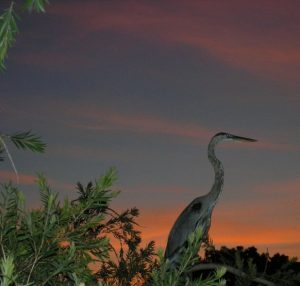
The world has changed much over the last hundred years. With the addition of large buildings, the need for building materials and new spaces to build within, and a myriad of other “new” requirements to enable humans to live in this timeframe, it’s a wonder that we simply do not take the time to evaluate our needs in contrast to the need of our bird friends – or other creatures. The obvious destructive force is habitat invasion. But there are certainly other issues that we think little of – and if we did, we would likely not recognize the inherent dangers found in them. One of those is light pollution.
Shedding Light on a Problem
What is light pollution? Light pollution, in the simplest terms, is an overabundance of light emanating from all artificial light sources. You see It most in large cities where light at night is a requisite need. In specific areas, the light is so richly distributed that areas can be easily pinpointed from the darkness of space. While lit nights are good for the human experience, it’s a disaster for our flying birds, especially during their migratory periods.
Why is light pollution dangerous? Well, the obvious answers lie within our 24-hour natural cycle. During the day hours, where the sun is shining brightly, we can conveniently maneuver a busy daytime world. Birds (and other creatures) depend on sunlight to help them eat, hunt, and navigate. Their own cyclical patterns encourage them to attend to several things during light, and when the sun sets, to do other things under the cover of night. This is especially true of nocturnal birds and other night-aware creatures. But with the introduction of artificial light, birds with their inherent instincts, can be confused. One of the traits of some birds is to migrate from one place to another annually.
Birds have a natural migratory ability to navigate by the moon and stars. With the relatively new introduction of lights seen at night, many birds can easily be drawn off course, eventually arriving at cities with bright lights. They often fly into buildings and die from the impact. If they do not die from impact, many are unable to fly again from sustained injuries. Vibrant lighting can also have a detrimental impact on migrating birds by arousing a signal to begin migration too early. Lights can also lead migrating flocks far off the course of their intended destinations.
Too Much Light in the Night
Studies have been launched to determine why artificial light has the impact that It does on many bird species. Such studies have discovered more and more birds living near cities with bright lights. It is said that birds can see the light of a city 250 miles over the horizon. Often, this deludes the migrating birds to make incorrect choices within their pathways. All of this is a contributing factor to our ongoing decimation of many bird species. More studies realize even more dangers that light pollution inflict on birds.
Science has been hard at work to discover fixes to the real problem of light pollution on many bird species who instinctively depend on natural navigational tools. Chicago, Houston, and Dallas are cities that have been determined to exhibit the most dangerous levels of nighttime lighting. Their network of lights have seemingly impacted the largest numbers of migratory birds.
How can we contribute to the safety of our flying birds? We can help by reducing or eliminating all unnecessary streams of artificial lighting. This can be done even in the smallest of towns. As a world, we’ve taken for granted the technological wonder of not ever having to be “blind” at night. We have yet to realize on a grand scale the harm such usage can have on nocturnal creatures. To preserve wild species, who unwittingly depend – more and more – upon the good sense and selfless behaviors of mankind, we must look to all areas of our advanced living to fine-tune our existence so that our creature counterparts can exist safely alongside of us.
Light pollution is a topic that many of us might not even think could be a dangerous event. But we learn all the time. Let us help make that learning count for the future. There is much more to learn about the effects of artificial lights on birds and other creatures by exploring knowledge cent
